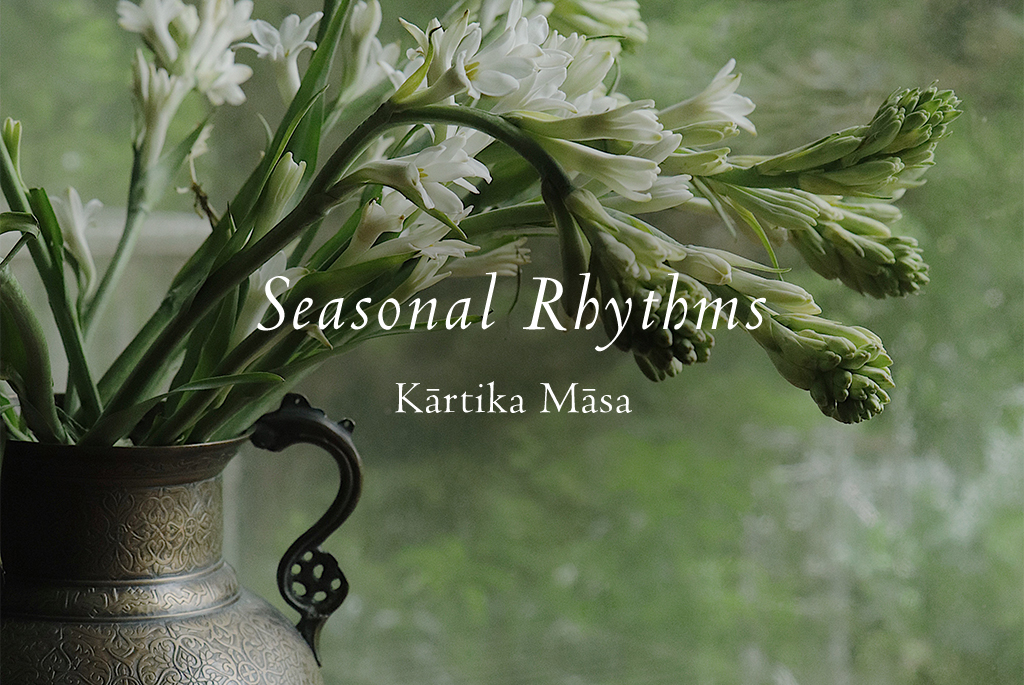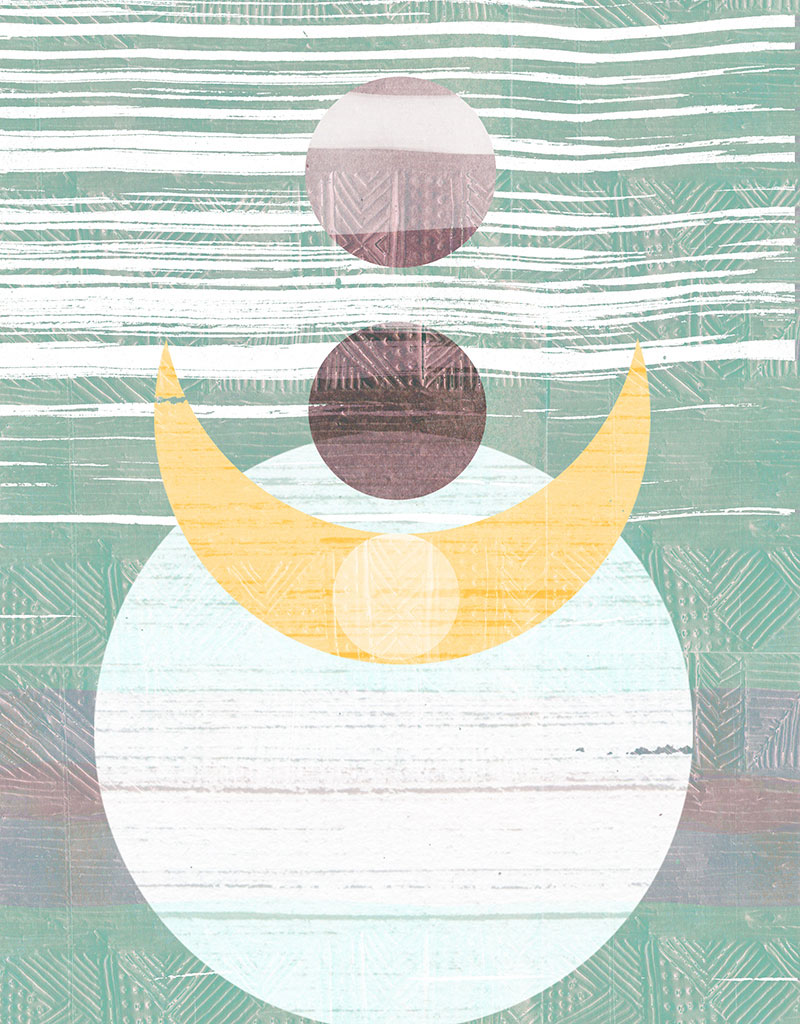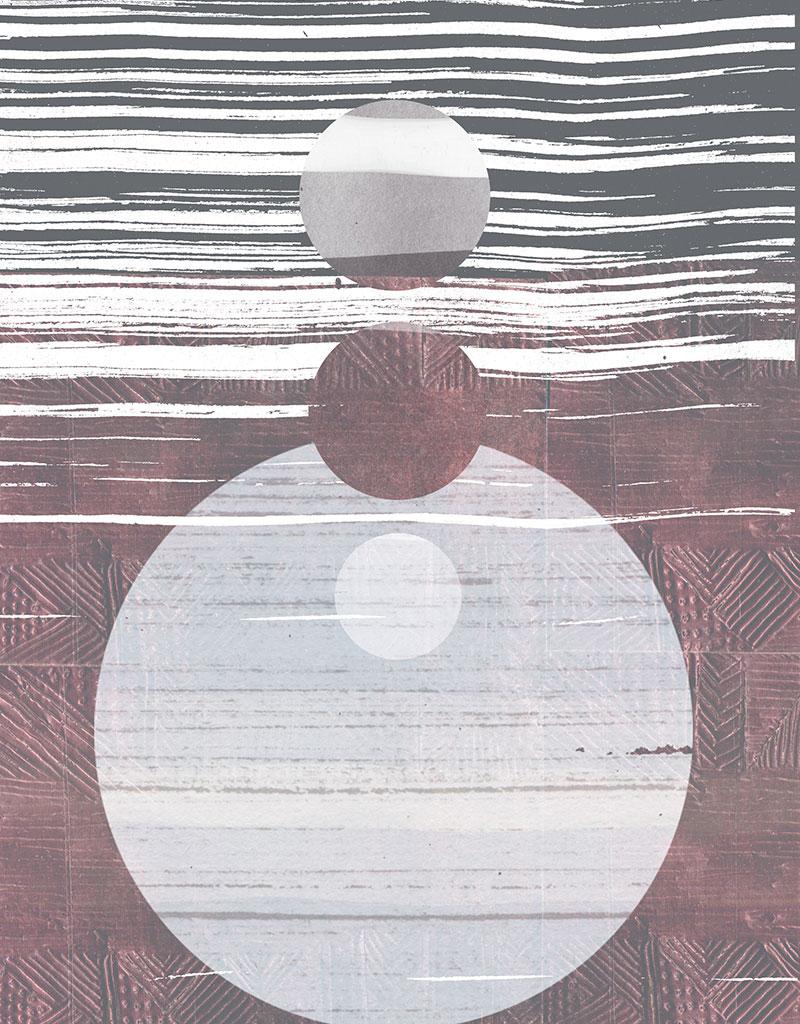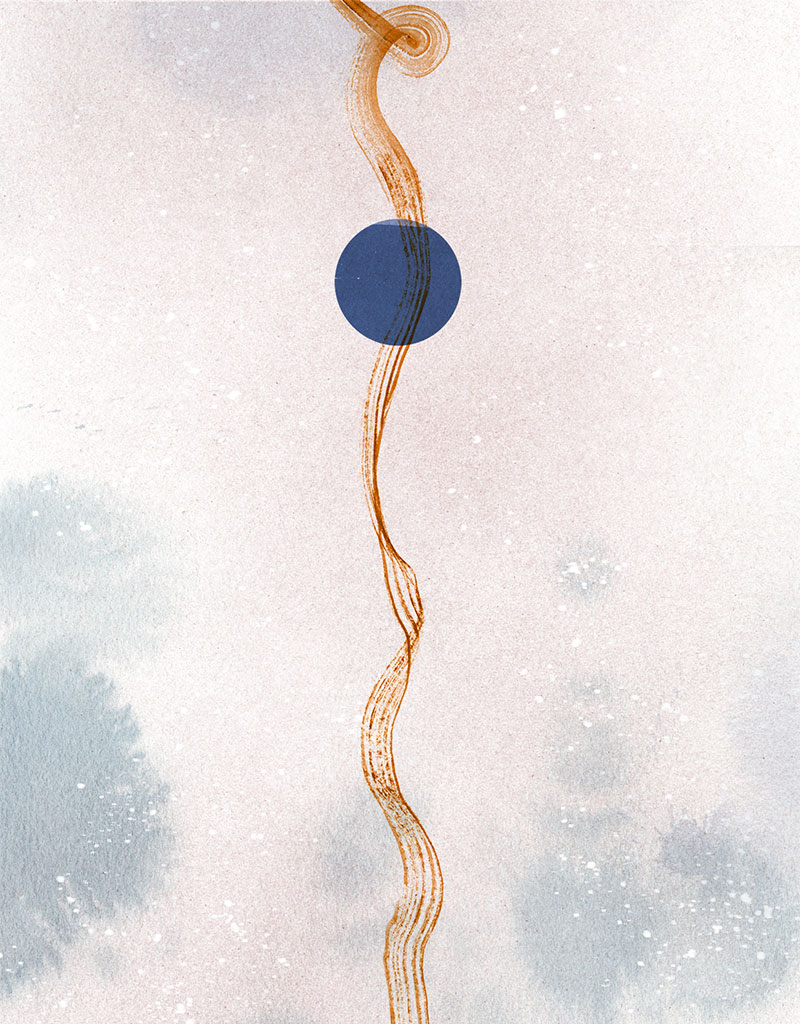Nilakshi Sharma

Kārtika māsa is the second month of Sharad rtu or Autumn. An auspicious month, filled with festive and ritual celebrations, Kārtika is also a time of transformations. The famed beauty and balance of Sharad rtu deepen and then begin to wane in this month.
To the days of Kārtika there is a balmy beauty – golden sunshine spills forth from deeply blue skies. Dawn is fragrant with the blooms of Parijat flower and dusk is redolent of the deeply sensual fragrance of Mogra, and Tuberose mingling with the divine scent of desi Gulab. The goddess tantalises us with glimpses of her magic and beauty.
Kārtika māsa begins a few days after the conclusion of Navratri – the nine nights of the goddess and Dussehra. And the first fortnight of Kārtika is but the preparation for the festivities of the subcontinent’s biggest festival – Deepawali. After the festival of light, there is a palpable shift in the energy of each day. There is a nip in the air, the golden sunlight begins to slip away and there is a sense of an ending that begins to seep through the last of the golden days of Sharad rtu.
As autumn wanes and winter beckons us, we start turning towards Agni, the most primordial of energies that invokes the warmth of the Sun and nurtures us when the Sun is distant. And the first ritual welcome of Agni as illumination begins with the festival at the heart of Kārtika māsa – Deepawali.
Deepawali literally means "row or series of lights". The origin legends for this festival of light vary. Deepawali is celebrated as the festival of goddess Lakshmi – the giver of material abundance and wealth. In this legend, Deepawali is the night when goddess Lakshmi descends upon the earth and wherever set steps, there she leaves behind the gift of prosperity and abundance for the year. Lakshmi is said to prefer clean, sweet scented abodes that beckon her with their beauty and brightness, and auspiciousness. Thus the rituals of Deepawali include cleaning our homes and making them beautiful and adorning them with symbols of auspiciousness – fresh paint, Kolums (a form of traditional decorative art that is drawn by using rice flour and thought to attract prosperity and abundance), fresh flowers, etc.
But there are other legends and celebrations that are also linked to this night. Deepawali is also the night when, after fourteen years of vanvas (exile), a victorious Lord Rama returned to Ayodhya the city and its denizens welcomed him home by lighting lamps in every nook and cranny of the city. There are other legends still; once upon a time Kubera, “the king of the yakshas (nature spirits) and the god of wealth”, was also honoured on this night with rituals and celebrations. In some regions the Amāvasyā (New Moon) night in which Deepawali is celebrated is also seen as the night of Kali – as the Adishakti, who rules darkness, time and chaos. The origin of the Jamdani Neelambari saree – a saree woven in the deepest shades of indigo with motifs that were originally woven in pure Silver thread, is often attributed to this celebration of Kali on Kārtika Amāvasyā.
In its actuality Deepawali is a five-day-long festival. The rituals start with Dhanteras, which is the thirteenth tithi of the waning Moon phase leading to the New Moon in the month of Kārtika. Traditionally this day is considered auspicious for buying anything made of metal such as jewellery. The next day is the celebration of Narak Chaturdashi which is also celebrated as Kali Chaudas in some parts of India. And then comes Amāvasyā, the night of the New Moon, that is illuminated by diyas and is known as Deepawali. The next day, which will be the Pratipada or the first tithi of the waxing Moon phase is celebrated as Govardhan Puja, also known as Annakut Puja. This day is also celebrated as the beginning of the new year as per the regional Gujarati calendar. The day after this marks the end of the Deepawali festivities. This fifth day is also celebrated in different regions and traditions as Yama Dwitiya, the day of the God of Death and as Bhai Dooj. Incidentally, the origin legend for this day is Yama visiting his sister Yamuna.
It is thought that these five-day-long festivities and the accompanying rituals for each, which have many regional variations, point towards the coming together of harvest festivals from different regions and other ritual celebrations.
Fifteen days after the Kārtika Amāvasyā, which we celebrate as Deepawali, the night of Kārtika Purnimā is also celebrated, as Dev Deepawali, the festival of the gods. Most famously celebrated in Benaras, it is believed that on this night the gods themselves come to the ancient city of Benaras, where Shiva holds dominion, to celebrate. Benaras, one of the oldest continuously lived in cities in the world, is traditionally known as Kashi, which also means “City of Lights”. This Full Moon is also celebrated in many other regions such as Orissa with differing rituals and legends.
Deep Vandana
Central to all of our ritual festive celebrations is the Deepak (Diya) or the earthen lamp. In an unbroken tradition going back over thousands of years, diyas are still lit every day across millions of homes in the subcontinent. They are lit in rituals of prayer, of remembrance and of beauty. When we light a diya in prayer or as a part of a ritual, we are invoking, first of all, the presence of Agni – the primordial god who guards the threshold between the worlds of men and the gods. Agni is also a power and presence in his own right; the giver of clarity and illumination. A traditional part of the act of lighting the ritual diya of prayer is a near forgotten ritual tradition – Deep Vandana, the Stotra (prayer) with the chanting of which we light the first ritual diya of prayer.
ॐ शुभं करोतु कल्याणं | आरोग्यं धन संपदा | शत्रुबुद्धिः विनाशाय | दीपः ज्योतिः नमोस्तुते || ॐ
“Salutations to the light that brings prosperity, auspiciousness, good health, abundance of wealth and destroys the enemy's intellect. To the light which is the Supreme Brahman as well as Janardhana (Vishnu), the light which destroys my sins, I offer my salutations.”
‘Shubham Karoti Kalyanam’, Deep Vandana Stotra
Rtusandhi is the seasonal juncture; the time of transition between two seasons. It is a time of shifting and changing energy, when the characteristics of one season yield to those of the oncoming season. Simple practices and subtle dietary changes at this time can help us align better with the oncoming season and keep us healthier. The ten days of Kārtika māsa are a period of rtusandhi and the time to make gentle changes.
With each day of this month, there is a subtle shift of energy. The golden glow of autumn dims every evening, gradually giving way to the encroaching darkness of the season of winter. The balmy weather of Sharad rtu starts to develop a note of chill. The days begin to feel shorter. As the month of Kārtika deepens the shift is palpable. And the last week or ten days of Kārtika are a good time to start preparing our bodies for the change in temperature and temperament that the winter season will bring.
A beautiful ritual of transition to the colder season is a bi-weekly ritual of Abhyanaga or self-massage with warm oil. Sesame oil is an excellent choice on its own to nourish the skin and prepare it for the drier winter season. Another way to ease your body into the oncoming winter is by ensuring the inclusion of gently warming herbs in our foods or having them as a daily tisane. Some spices that that will enhance digestion and support immunity are - Ginger, Coriander, Cumin, Cinnamon and Cardamom.
The onset of winter can also bring with it congestion and other phlegm related problems. Herbs such as Liquorice or Mulethi can be particularly good as a tisane at this time of the year as it helps discourage the build-up of excess phlegm in the body. To keep your respiratory tract clean you can also try gargling every morning with a cup of hot water with 1 teaspoon each of Turmeric and Rock Salt.
The days of Kārtika are still filled with the beauty and grace of Sharad rtu but the nights bring with them a hint of the oncoming winter season.
May the month of Kārtika be a time of beauty and celebration for you.





